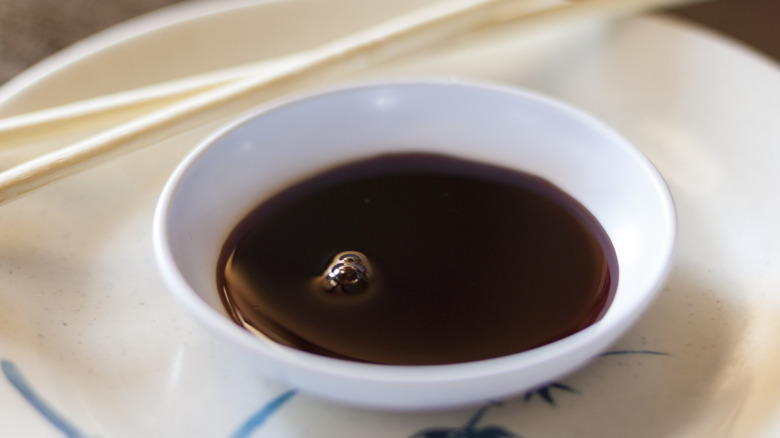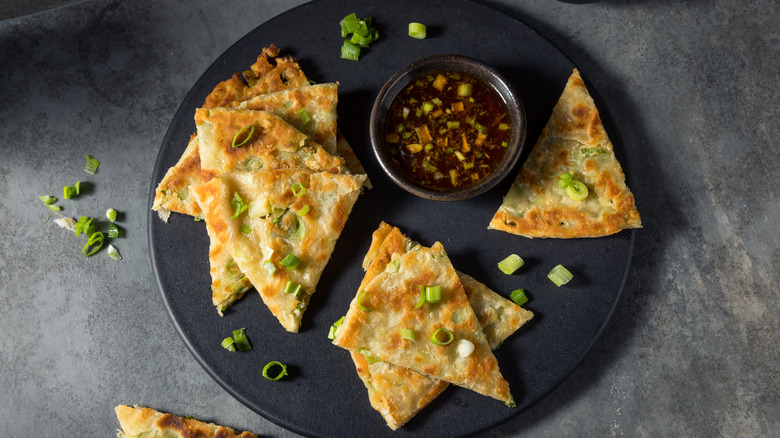What Sets Thick Soy Sauce Apart From The Other Varieties
Essentially a combination of fermented soybeans, wheat, and brine, modern soy sauces take many forms: There are lighter and darker variations, gluten-free versions, and products with different levels of sodium. One soy sauce, thicker and sweeter than the rest, tends to be used in Taiwanese cooking as a drizzle and dipping sauce. Thick soy sauce is a lesser-known variety and is worth discussing. It's thicker than the other versions for a couple of reasons. First, sugar or molasses is added to give it a pronounced sweetness and a little more body; the inclusion of a thickening agent like (even more) wheat or some other kind of starch really seals the viscosity deal.
The Taiwanese in particular have taken this concoction to heart, as evidenced by its universal presence in kitchens and market stalls around the country. Thick soy sauce clings to whatever it meets and so is often used as a dipping sauce for dishes like traditional eggs crepes and scallion pancakes in addition to accompanying various kinds of dumplings.
Getting into the thick of it
First, a little saucy housekeeping: There's a bright dividing line between Chinese and Japanese soy sauces. In essence, the Japanese introduced wheat into a process that traditionally only used soybeans, adding a sweeter and more complex flavor profile to what they call shoyu. Chinese soy sauces also sometimes contain wheat, but in general, their flavor profile is more salty and assertive. There are three basic types of Chinese soy sauces: light, dark, and thick. The appellation "light" soy sauce does not mean a lower sodium content but instead refers to color. It is meant for everyday cooking applications, like in a stir fry or dressing. Dark soy sauce is a little thicker, sweeter, and less salty. Because of its deep color and richness, dark soy sauce tends to be the go-to for dishes like red braised pork belly. That leaves thick soy sauce and its many pleasures previously discussed.
Thick soy sauce is easily obtained in the U.S., either in most Asian markets or by whipping up a batch at home. If you need some in a pinch, oyster sauce is a perfectly good substitute, because both are thick, sweet, and packed with umami deliciousness.

